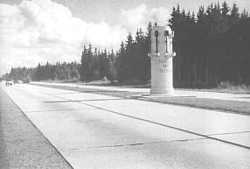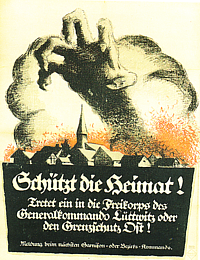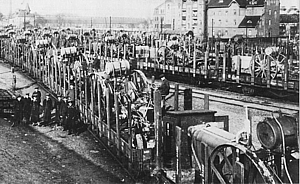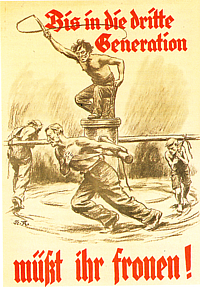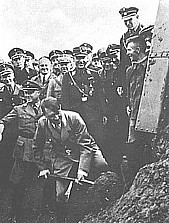1920 Free Corps poster: "Protect the Homeland"
The reactionary Freikorps preyed upon German fears of invasion after
World War I. |
1923: German tractors on a train to France
When the French and Belgians occupied the Ruhr, they ensured that
German factory production went straight to France.
The occupation was ended with the acceptance of the Young Plan in
1930. |
"For 3 Generations you'll have to slave away".
The Young Plan scheduled the repayment of 59Billion RM dept in 2
billion RM/year installments. It was VERY unpopular. The DNVP, NSDAP
and Stahlhelm got 10% of vote for a referendum to criminalize the
German signatories. In 1932 it was abandoned, and Germany was only
required to repay 3 billion RM total |
